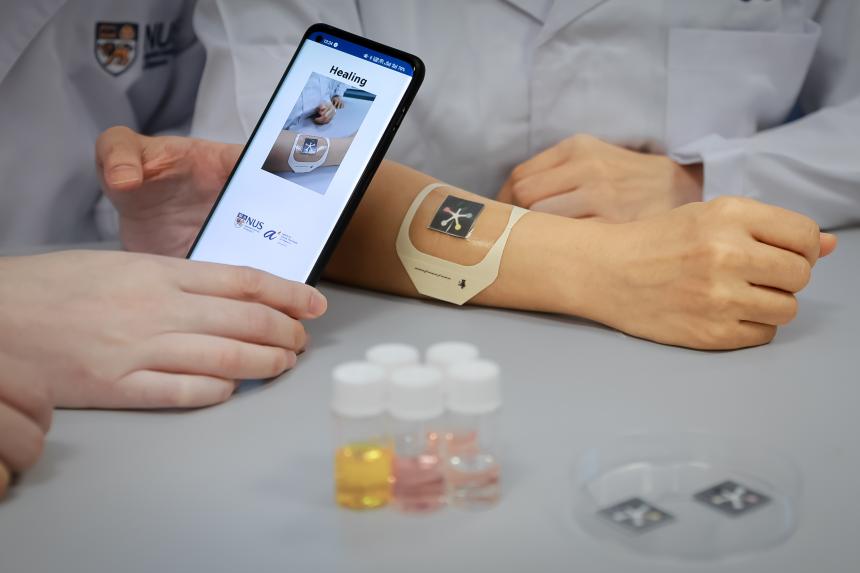SINGAPORE - A paper-thin sensor patch the size of a postage stamp attached to the skin could soon help to determine how well a wound is healing – without the need to remove its dressing.
The artificial intelligence-enabled device aims to provide a more efficient way of monitoring wound recovery, as well as improve wound care and management.
Dubbed the Paper-like Battery-free In situ AI-enabled Multiplexed (Petal) sensor patch, it measures just 1.8cm by 1.8cm.
It was developed by researchers from the National University of Singapore (NUS) and the Agency for Science, Technology and Research’s Institute of Materials Research and Engineering (Imre).
A paper on the researchers’ work on the sensor patch, which was developed in collaboration with a research team from the Nanyang Technological University and the Skin Research Institute of Singapore, was published in the scientific journal Science Advances in June.
“A lot of times if you don’t have a way to monitor the wound-healing process, especially for more complex wounds, then this becomes a problem,” said Associate Professor Benjamin Tee from the NUS Institute for Health Innovation and Technology during a media briefing on Monday.
Prof Tee, the principal investigator for the research, said wound dressing such as bandages could lead to infections if done improperly.
The issue of wound management is especially relevant in an ageing society like Singapore, where most wounds are experienced by those aged 80 and above, he added.
Wound healing currently typically requires a physical examination by a clinician, with wound infections that need a period of up to three days to be diagnosed.
It also requires wound dressing to be removed regularly, which can increase the risk of infection as well as cause additional pain for patients.
Each sensor patch features a panel in the shape of a flower, with each of its five petals acting as a sensor for one of five markers – the temperature of a wound, its acidity, moisture levels as well as the presence of uric acid and trimethylamine, a chemical compound.
These cover a wide spectrum of situations, allowing for more comprehensive assessments of the wound-healing status, said principal scientist Su Xiaodi, who is from the soft materials department at Imre.
The patch collects fluid from the wound and distributes it to the five sensors, which change colours to show the levels of these indicators.

Images of the sensor patch can be captured using a smartphone and classified using AI.
Unlike other wearable wound sensors, Petal does not require bulky printed circuit boards or batteries.
The researchers noted that lab experiments showed the Petal sensor patch had an accuracy rate of 97 per cent in differentiating healing and non-healing chronic and burn wounds.
The sensor patch has been tested on chronic and burn wounds, and can be adapted for other types of wounds by incorporating other sensors, such as those for glucose or lactates, depending on the needs of clinicians.
An international patent for Petal has been filed, with the researchers planning to conduct human clinical trials soon.
Prof Tee said that while Petal’s use is currently limited to small wounds, the technology can be expanded to monitor larger wounds.
He added that the sensor patch could come into more widespread use within the next five to 10 years.
The use of such wearable technology in healthcare is growing, with the global market for such devices expected to reach US$750 billion (S$1.014 trillion) by 2032, according to US-based market researcher Global Market Insights.


